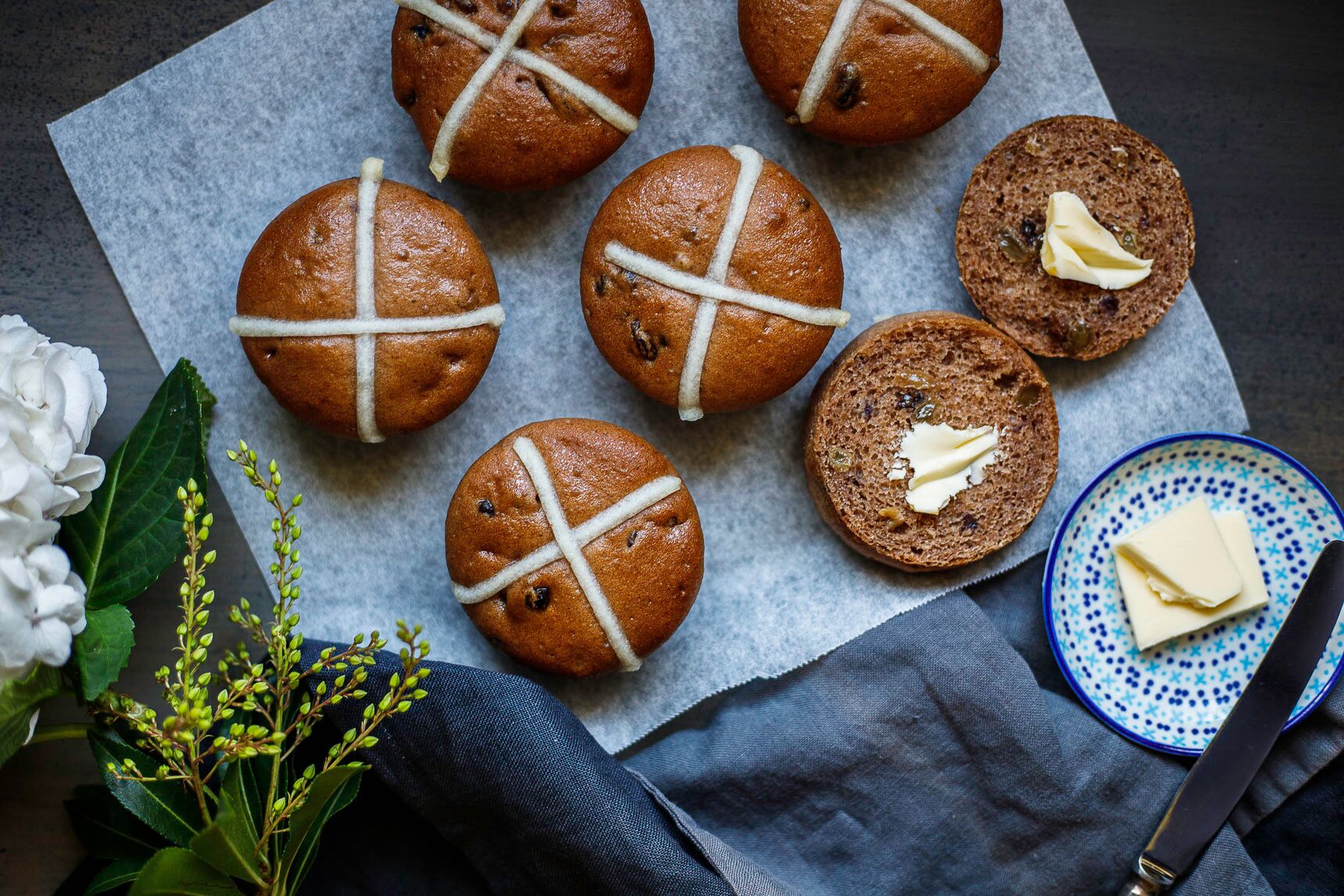5 things you didn’t know about hot cross buns

April 18, 2019
5 things you didn’t know about hot cross buns
The smell of freshly baked sweet dough, delicious hot cross buns are traditionally eaten in the lead up to Easter. Blessed with an icing or dough cross on the top, the humble bun has been around in some communities for centuries.
Here are 5 things we investigated that we think you didn’t know about the hot cross bun.
- It is believed, somewhere between the 12th and 14th century that a monk at the Cathedral of St Albans was the first to mix the yeast with cinnamon and delivered his baked treats to the poor. However, the first definite record of hot cross buns comes from a 16th and 17th century text stating: "Good Friday comes this month, the old woman runs, with one or two a penny hot cross buns."
- The practice of eating special small cakes at the time of the Spring festival seems to date back at least to the ancient Greeks, but the English custom of eating spiced buns on Good Friday was perhaps institutionalised in Tudor times (period between 1485 and 1603 in England and Wales and includes the Elizabethan period), when a London bylaw was introduced forbidding the sale of such buns except on Good Friday, at Christmas, and at burials.
- The pagans worshipped the goddess Eostre (after whom Easter was named) by serving tiny cakes, often decorated with a cross, at their annual spring festival. When archaeologists excavated the ancient city of Herculaneum in southwestern Italy, which had been buried under volcanic ash and lava since 79 C.E., they found two small loaves, each with a cross on it, among the ruins. The English word ‘bun’ probably came from the Greek boun, which referred to a ceremonial cake of circular or crescent shape, made of flour and honey and offered to the gods.
- Superstitions regarding bread that was baked on Good Friday date back to a very early period. In England, people believed that bread baked on this day could be hardened in the oven and kept all year to protect the house from fire. Sailors took leaves of it on their voyages to prevent shipwreck, and a Good Friday loaf was often buried in a heap of corn to protect it from rats, mice, and weevils. Finely grated and mixed with water, it was sometimes used as a medicine.
- The English believe that hanging a hot cross bun in the house on this day offers protection from bad luck in the coming year. It's not unusual to see Good Friday buns or cakes hanging on a rack or in a wire basket for years, gathering dust and growing black with mould, although some people believe that if the ingredients are mixed, the dough prepared, and the buns baked on Good Friday itself, they will never get mouldy.
And to throw in another one for the modern times, hot cross buns are now available gluten free from us! Enjoy and Happy Easter.
